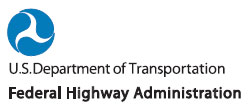Cool Tips on HOT Lanes:
Are They Right for Your Community?
What Are HOT Lanes?
Traditional high-occupancy vehicle (HOV) lanes require vehicles, except for motorcycles and bicycles, to have a minimum number of passengers. “HOT lanes” is short for “high-occupancy toll” lanes, which allow drivers to pay a toll and still use the lanes if they do not have enough passengers or are riding transit services. In this way, HOT lanes provide more options for drivers as well as help communities improve mobility without increasing overall congestion.
While communities may call them by different names, such as Fast Lanes or Express Lanes, the basic operation is the same – HOT lanes encourage carpooling and other transit alternatives while offering vehicles that do not meet standard occupancy requirements another option for providing more reliable travel times.
Why HOT lanes?
Communities consider HOT lanes for a number of reasons. HOT lanes can:
- Provide reliable travel times. HOT lanes offer “congestion insurance” when you really need to be somewhere on time.
- Increase roadway efficiency. Actively managed HOT lanes operate more efficiently than traditional HOV lanes.
- Provide a funding source for operations and maintenance on the lane. Revenues generated by HOT lanes can supplement the costs of their construction, ongoing maintenance, and enforcement.
- Improve the effectiveness of HOV lanes. HOT lanes better utilize existing lanes while continuing to encourage drivers to use transit and carpooling alternatives.
What Are the Benefits of HOT Lanes?
HOT lanes provide mobility options for individual drivers while encouraging the use of transit and carpooling. Tolls collected from HOT lanes can supplement the operations, enforcement and maintenance costs for the facilities. Buses benefit from HOT lanes, and research shows that communities with HOT lanes use transit services more often. Solo drivers know they can count on getting where they need to be on time.
For example, Minneapolis has increased the number of vehicles using the I-394 MnPASS lanes by 33 percent since the facility’s opening in 2005 without degrading transit and HOV use. Furthermore, travel speeds of 50 to 55 mph have been maintained for 95 percent of the time in the lanes. Denver originally projected 500 toll payers during the peak hour travel along I-25 but in fact achieved 1,400 in the first year of operation. Use of the I-25 HOT lanes has grown by almost 18 percent since the HOT lanes opened in 2006 and the lanes remain uncongested.
HOT Lessons Learned by Communities
“What we have found is that even people of different economic levels have been using or will use these lanes when they find a benefit. They’re actually making the general purpose lanes a bit more attractive and a bit less congested. In the end, everyone is benefited by them.”
Robert Arnold — Director, Office of Transportation Management, FHWA
“I think that most folks would agree that HOV facilities are a lot friendlier to the environment because of the amount of people they carry versus the number of vehicles. We did not have any environmental challenges as we moved forward with the HOT lanes concept.”
Samuel Johnson — Chief Technology Officer, SANDAG
Keys to Success
- Identify clear, measurable goals and objectives. For example, if your goal is to increase transit ridership, set on-time bus performance standards and use revenue for transit improvements.
- Select a good candidate corridor. Make sure your project is reasonable, from design to access treatment
to toll operation and enforcement. A good starting point is FHWA’s screening criteria.
- Create a flexible maintenance / operational plan. Traffic management needs change over time. How will
the toll rate be modified? Might access be restricted by different criteria in the future? Think through possibilities and build them in to your project rationale.
- Market the project to the public in advance to increase acceptance. Engage the public early in the planning
process with support of local project champions.
Are HOT Lanes Right for My Community?
Here are a few questions to consider when deciding if HOT lanes are right for your community:
- Could the HOV lanes in my community be better utilized?
- Do I wish to improve transit service for commuters in key corridors?
- Am I prepared to invest in infrastructure and technology enhancements that may be cost-recoverable in the long run?
- Would revenue potentially generated from tolls benefit my community?
Who Is Implementing HOT Lanes?
Communities around the nation are installing HOT lanes in response to increased congestion. There are 10 HOT lanes currently operating in eight states:
- I-15 FasTrak in San Diego, California
- US 290 Northwest Freeway QuickRide HOT Lanes in Houston, Texas
- I-394 MnPass in Minneapolis, Minnesota
- I-35W MnPAss in Minneapolis, Minnesota
- I-25 Express Lanes in Denver, Colorado
- I-15 Express Lanes in Salt Lake City, Utah
- SR 167 HOT Lanes Pilot Project in Seattle, Washington
- I-95 Express Lanes in Miami, Florida
- I-680 Alameda County, California
- I-85, Atlanta, Georgia
For more information about implementing HOT lanes in your State or Region, see the following resources:
FHWA Office of Operations:
http://www.ops.fhwa.dot.gov/freewaymgmt/index.htm
FHWA Tolling and Pricing Program:
http://www.ops.fhwa.dot.gov/tolling_pricing/index.htm
Neil Spiller
Transportation Specialist
Federal Highway Administration
Office of Operations, HOTM E84-431
1200 New Jersey Ave, SE
Washington D.C. 20590
Phone: 202-366-2188
neil.spiller@dot.gov
Greg Jones
Transportation Specialist
FHWA-Resource Center
61 Forsyth Street, Ste. 17T26
Atlanta, GA 30303
Phone: 404-562-3906
Fax: 404-562-3700
GregM.Jones@dot.gov
